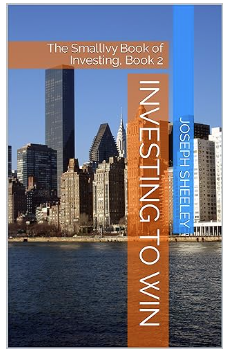
Photo by Dziana Hasanbekava on Pexels.com
" data-orig-size="868,1300" sizes="(max-width: 868px) 100vw, 868px" data-image-title="crop pondering man analyzing expenses and taking notes" data-orig-file="https://smallivy.files.wordpress.com/2024/02/pexels-photo-7063765.jpeg" data-image-description="" data-image-meta="{"aperture":"0","credit":"","camera":"","caption":"","created_timestamp":"0","copyright":"","focal_length":"0","iso":"0","shutter_speed":"0","title":"","orientation":"0"}" width="868" data-medium-file="https://smallivy.files.wordpress.com/2024/02/pexels-photo-7063765.jpeg?w=200" data-permalink="https://smallivy.com/2024/03/03/how-to-allocate-assets/pexels-photo-7063765/" alt="" height="1300" srcset="https://smallivy.files.wordpress.com/2024/02/pexels-photo-7063765.jpeg 868w, https://smallivy.files.wordpress.com/2024/02/pexels-photo-7063765.jpeg?w=100&h;=150 100w, https://smallivy.files.wordpress.com/2024/02/pexels-photo-7063765.jpeg?w=200&h;=300 200w, https://smallivy.files.wordpress.com/2024/02/pexels-photo-7063765.jpeg?w=768&h;=1150 768w" class="wp-image-24090" data-large-file="https://smallivy.files.wordpress.com/2024/02/pexels-photo-7063765.jpeg?w=684" />Photo by Dziana Hasanbekava on Pexels.comInvesting to Win provides a strategy for growing wealth in the markets that is the result of decades of investing experience. One of the epiphanies I had when writing the book made me realize the best way to choose what assets to buy based on your goals. Asset allocation, where you divide up your money and send it into funds investing in different types of assets (or buy individual stocks, real-estate, and bonds yourself), is really the center of successful investing. This is particularly true if you invest mainly thorough index funds or other types of mutual funds. In this article I’ll describe the realization I had and how you should choose your allocations.
Want to learn the secrets to investing and really turbocharge your returns? Check out the second book in The Small Investor series, Investing to Win. This book presents 40 years of investing experience. Someone starting with zero knowledge of investing and the stock market could take this book and learn all that they needed to invest and do well. It would also be useful to someone who has invested and traded stocks for a while but who is really not getting the kind of returns desired.

Investing to Win
(Note, this site contains affiliate links. As an Amazon Associate I earn from qualifying purchases. When you click on an affiliate link and buy something, The Small Investor will get a small commission for the referral. You are charged nothing extra for the purchase. This helps keep The Small Investor going and free. I don’t recommend any products I do not fully support. If you would like to help but don’t see anything you need, feel free to visit Amazon through this link and buy whatever you wish. The Small Investor will get a small commission when you do, again at no cost to you.)
All assets have a hold time
Financial planners, Twitter/X, etc… often talk about stocks being “risky” and bonds being “safe.” Wrong. These are just different types of assets. Other types of assets include real-estate (which can include REITs), Master Limited Partnerships (MLPs), fine art, cars and other collectibles. Every one of these can be invested in with a minimum risk if you can get sufficient diversification and you hold for at least a certain minimum time. Let’s call this minimum time a “hold time” for the asset.
The reason assets must be held a certain amount of time is that there is a random component to the price. With stocks, there are market cycles that take all stocks higher or lower regardless of how the company is doing financially. With homes, there are times when the markets are hot and times when they are cool. Underneath these swings in price there is a fundamental growth rate for the asset that is fairly predictable. The asset hold time is the period over which you need to hold an asset for the random, unpredictable factors in the markets to smooth themselves out, leaving just the predictable returns of the asset. For short-term bonds, this hold time is 3 months to a year. For medium-term bonds, it’s 5-10 years. For stocks, it’s around 15-20 years.
To better understand the minimum hold time, let’s look at one type of asset you’re likely familiar with: a house. If you were to buy a house and then try to resell it a month later, it is very likely that you would lose at least the amount of money you pay in relator fees (7%) and other costs associated with buying and selling a house. Whether you would make any money before accounting for these fees is a coin flip – it just depends on who comes along who is willing to buy the house.
If you were to wait a year, you’d still lose some money to these fees, plus it still is really a coin flip on whether you would be able to sell the home for more or less than you paid. If the market is really hot, you might be able to come out ahead net of fees and actually make a small profit. If the market is stagnant or declines, however, you’ll be down maybe 10-15%. There is no predictability in the price you’ll get and whether you’ll be able to make any money.
If you were to hold the home for 25 years, however, you are nearly assured of getting at least twice what you paid for the house simply due to inflation. Add in a little population growth and you’ll be making some money even ignoring the effects of inflation. The realtor fees really won’t matter much at that point, either, compared to the gains you’ve had. You might pay $30,000 in fees, but make $200,000-$300,000 on the home. So, if you hold the home at least 15 or 20 years, you’re almost guaranteed to make money and you can predict how much you’ll make, at least within a range. The minimum holding time for a home is therefore maybe 15 to 20 years.
(If you’d like to learn more about how to decide how much you should put in different types of assets, Sample Mutual Fund Portfolios gives lots of information and examples of how to make allocations for all sorts of different goals, including retirement.)

Assets with long hold times have better returns
When you’re buying an asset that has a longer holding time, you’re locking up your money for a longer period of time. You might get lucky and be able to get out sooner, but you aren’t really assured of getting the returns you should get from a given asset unless you are willing to hold for the minimum holding time. If you are locking up your money longer, you should get a higher return in exchange.
Assets that have longer hold times also tend to be more volatile, making them more risky in general. (The volatility, which means they have large, unpredictable movements, is what makes them have a longer hold time.) If you hold then for the minimum hold times, however, all of the volatility averages out, leaving you with the higher returns. For example, if you bought a portfolio of large cap stocks, hold times might be around 15 years and returns might be 10-12%. A portfolio of small cap stocks might ae a hold time of 20 years but return 12-15%.
If you have the ability to hold for at least the minimum hold time, you should focus on the higher return asset. To buy lower performing assets means that you’ll be giving up returns because the higher volatility asset will have a higher return if you hold long enough. You therefore put money away that you won’t need for 40 years in stocks and not bonds. You also tend towards smaller stocks when you have longer hold times.
As you get closer to needing the money, however, you can no longer hold for the required time, making it no longer a good investment to be in the higher volatility assets because you don’t know what your returns will be over short periods of time. You might come out ahead, but you may not. Investing is all about predictable returns. You therefore start to shift to assets that have a higher predictability since those are the assets in which you are more likely to get a better return. Sure, it is possible that the volatile asset may perform better, but it might also perform far worse. You therefore trade potential returns for more likely returns.

An example of asset allocation
Knowing this information, let’s put it to use in an example with a theoretical investor to illustrate the concepts. Let’s say there is a 20 year-old who has started investing in the 401k plan of his employer. He’s putting 10% of his paycheck in and getting a 5% match, a total of $10,000 per year. How would he allocate his investments?
His choices are:
- A US large-cap stock index fund
- A US large-cap growth fund
- A US large-cap value index fund
- A US small-cap stock index fund
- A short-term government bond fund
- A medium term corporate and government bond fund
- A long-term corporate bond fund
- A managed growth and income fund
- A large-cap international stock index fund
- A managed emerging markets international stock fund
- Four target date funds, corresponding to each of the following four decades
- A managed US growth fund
- A managed US value fund
Given these choices, here are the things to note:
Long time horizon: He has a really long time horizon, so he can hold any of the choices for longer than the needed holding period.
High fee versus short fee options: The managed funds would have larger fees than the index options.
Equal holding period/return choices: Some options like large US and large international stocks have equal holding periods and returns.
The wealthiest people read a lot of non-fiction books. Don’t have time to read books because of your long commute? Listen to your books in stead with Audible. Free trial at the link below.
Given this, here is how I would allocate investments:
- US large-cap stock index fund: 20% ($2000/yr)
- Large-cap international stock index fund: 25% ($2500/yr)
- Managed emerging markets international stock fund: 5% ($500/yr)
- US large-cap value index fund: 10% ($1000/yr)
- US small-cap stock index fund: 40% ($4000/yr)
Notice the following:
1. US large-caps are about 30% of the portfolio versus 40% in small-caps. The reason is that small-caps have a higher rate of return if held for the required holding period, so these are over weighted.
2. A value fund is added to the US large-caps. This is because value outperforms growth over long periods of time, so we tilt the portfolio to value by adding this fund.
3. US large-caps and international are both around the same amount. Both of these options will provide about the same long-term results, so we add both to reduce overall volatility without reducing total returns.
4. We add emerging markets, but not too much. This is a very risky sector, but can provide spectacular results when things work out. We add a little, but don’t go crazy. Active management is key here because there are a lot of things in this sector you do not want to own.
5. There are no bonds. Bonds will underperform stocks over a 40-year period. There is no reason to add them at this point. When we get closer to retirement, like about ten years out, we’ll add some then since they may start to outperform stocks over shorter periods of time. We will also reduce small-caps when the investor gets to this point since we’re getting into the time span where small-caps may not outperform.
Asset allocation is really not that difficult when you understand how the different types of assets perform over different time periods. There are also a lot of different portfolio constructions that will provide about the same results, so a lot of what we’re doing here is fine tuning. The most important thing is to be putting money away and investing it. The second most important thing is to leave things alone generally and not try to time the markets with your investments.
Have a burning investing question you’d like answered? Please send to [email protected] or leave in a comment.
Follow on Twitter to get news about new articles. @SmalllIvy
Disclaimer: This blog is not meant to give financial planning or tax advice. It gives general information on investment strategy, picking stocks, and generally managing money to build wealth. It is not a solicitation to buy or sell stocks or any security. Financial planning advice should be sought from a certified financial planner, which the author is not. Tax advice should be sought from a CPA. All investments involve risk and the reader as urged to consider risks carefully and seek the advice of experts if needed before investing.
